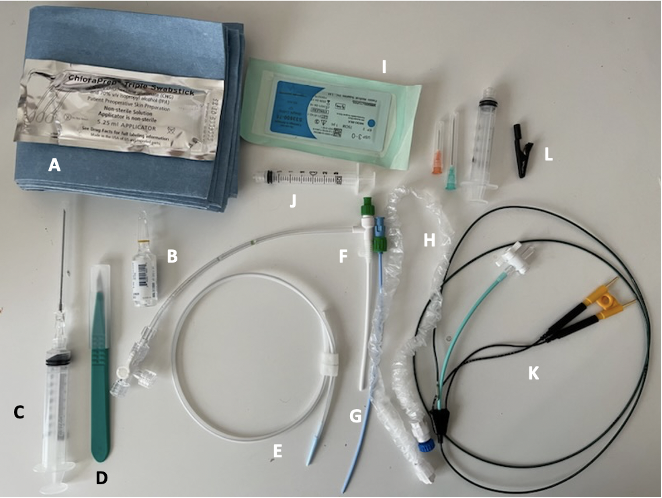Away Rotations: Double-Edged Sword

Suzanne Bryce
EMRA MSGC Editor
Medical Student, MS IV
Vanderbilt University School of Medicine
The time of year is quickly approaching for third year medical students to apply for away rotations. The topic of away rotations in Emergency Medicine is somewhat controversial, and opinions vary dramatically. EM is not a field like some of the surgical subspecialties where an away rotation is mandatory, but more and more fourth year students going into EM are choosing to do Emergency Medicine electives. While away rotations can certainly help your application, they are not foolproof. Being on your best behavior for an entire month while adjusting to a new city can be exhausting. Below are some frequently asked questions to help you decide whether or not to apply for an away rotation, and to guide you in the next steps. This article is directed towards medical students who have an Emergency Medicine rotation at their medical school; students without a home rotation will all need to complete away rotations.
What are the pros of doing an away rotation?
An away rotation can give you experience with a different hospital, medical record system, faculty, and patient population. It can help you decide what type of residency program is best for you. While an away rotation can serve as your “audition” for that residency program, you are also auditioning the program! Spending a month at a program can provide you substantial insight into the daily functioning of that residency. An away rotation can give you practical and procedural experience that you may not get during your home EM rotation. Away rotations can give you the chance to live in a different city for a month, allowing you to see if that is a city you would enjoy residing in for 3-4 years during residency. By successfully completing an away rotation (and acquiring a strong letter of recommendation), you are showing residencies that you are adaptable and work well in a new environment. While doing an away rotation, you have the opportunity to form new relationships with other medical students, residents, and faculty members within Emergency Medicine. Finally, you get to spend an extra month in the Emergency Department, which is always a plus!
What are the cons of doing an away rotation?
Applying for an away rotation can be time-consuming, stressful, and expensive. Even more expensive is the possibility that you may have to pay two rents during the month of your away rotation! It can be emotionally difficult to leave your family behind for an entire month. There can be a lot of paperwork and yellow tape that you must complete prior to the start of your away rotation (i.e. proof of insurance, immunization records, HIPAA training, medical records training). You must present your best self during the entirety of your away rotation. If you rub any faculty member (or resident, for that matter) the wrong way, that could negatively influence your chances of matching to that program. It can be stressful adjusting to a new setting; finding the parking garage, locating the cafeteria, and figuring out how to log into the system may seem simple until you try to do them while simultaneously impressing your attending! By the time you get settled, your month-long rotation may practically be over. Some program leaders may believe that by completing an away rotation at another program, you are expressing more interest in that program than in their program. (For instance, if you rotate at Program A and then apply to Program B, the leadership of Program B may correctly or incorrectly assume that you are more interested in Program A). Some students simply don’t want to miss out on all of the elective opportunities at their home institution- when else will you have a chance to rotate through radiology, the medical examiner’s office, or rheumatology?
What are other options for increased exposure to EM during the fourth year of medical school?
There are plenty of other ways to experience Emergency Medicine even if an away rotation is not possible or desirable for you! Check with your school to see if EM subspecialty electives exist, such as EMS or ultrasound. If no such rotations have been established, consider starting one up. Many medical schools allow students (especially fourth years) to design their own electives. Talk to your EM faculty and your school’s registrar about this possibility. Also consider doing a month or two of EM research. This can be a great introduction to academic EM, and can allow you to spend some more time in your institution’s Emergency Department while getting to know faculty members.
If I decide to do away rotations, how many should I do?
First of all, check with your school. Some schools limit the number of fourth year rotations a student can complete within one specialty. Even if your school doesn’t limit your number of EM rotations, most EM program directors recommend only one away rotation, with two maximum. Use the rest of your fourth year to explore other clinical areas of interest, take time to relax, and concentrate on the application process. You will have the rest of your life to practice Emergency Medicine; don’t make it the only thing you do during your fourth year!
How do I pick the right away rotation for me?
It can seem very overwhelming to choose places to apply for your away rotation. Consider selecting a practice setting that is different from your home institution, so that you can get a broader view of how EM is practiced. For instance, if you attend medical school at a strong academic tertiary care center, consider rotating at a county or community facility. If you have a strong desire to live in a certain city for residency, it is an excellent idea to complete an away rotation in that particular location. Use EMRA’s comprehensive Database of Away Rotations to help narrow your search.
When should I do my away rotation?
Generally, the earlier during fourth year the better. July, August, and September are all excellent options for away rotations. July rotations may be somewhat difficult to obtain, since many departments give priority to their own medical students going into EM during the July rotation. Rotations in October or beyond can still be helpful, but it will be difficult for you to obtain a letter of recommendation from that rotation in time for your residency application. Of course, if your goal in completing the away rotation is only to impress that program in particular, rotating any time prior to the making of rank lists can be beneficial. Most medical students aim to achieve an outstanding letter of support during their rotation to use in applying to all of their desired programs, however.
In the end, the decision is up to you. Do not feel obligated to complete an away rotation, but realize that it may open doors for you (particularly if you are especially interested in a certain program!) Take the time to talk to your advisor and EM residents to determine what is best for you.
Related Content



May 02, 2023
Critical Care Device Series: Transvenous Pacemaker
Temporary transvenous pacing (TTVP) utilizes central venous access to pass an electrode into the right ventricle. TTVPs are one of the most infrequently performed procedures by emergency physicians; however, it is essential for those working in any setting with critically ill patients to be well-equipped to perform this procedure emergently.




